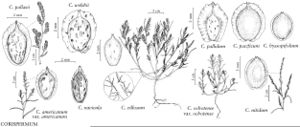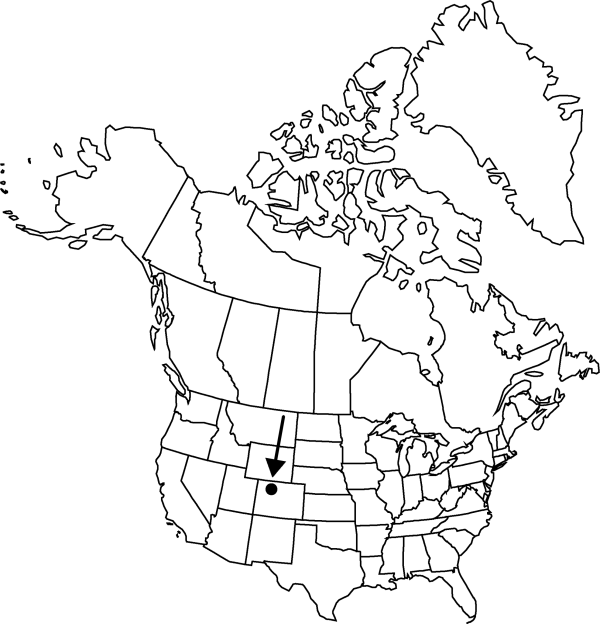Difference between revisions of "Corispermum navicula"
Novon 5: 349. 1995.
FNA>Volume Importer |
FNA>Volume Importer |
||
| Line 48: | Line 48: | ||
|publication year=1995 | |publication year=1995 | ||
|special status= | |special status= | ||
| − | |source xml=https://jpend@bitbucket.org/aafc-mbb/fna-data-curation.git/src/ | + | |source xml=https://jpend@bitbucket.org/aafc-mbb/fna-data-curation.git/src/f6b125a955440c0872999024f038d74684f65921/coarse_grained_fna_xml/V4/V4_610.xml |
|genus=Corispermum | |genus=Corispermum | ||
|species=Corispermum navicula | |species=Corispermum navicula | ||
Revision as of 20:01, 24 September 2019
Plants branched from the base or nearly so, 5–15(–25) cm, sparsely covered with dendroid or stellate hairs, or almost glabrous. Leaf blades linear-lanceolate, linear, occasionally narrowly lanceolate, usually plane, (1.5–)2–4 × 0.1–0.5 cm. Inflorescences compact and dense, ovoid, ovate or oblong-obovate. Bracts ovate or ovate-lanceolate (occasionally proximal ones leaflike, narrowly ovate-lanceolate or lanceolate), 0.5–2 × 0.2–0.6 cm. Perianth segment 1. Fruits brown, dark brown, or deep olive green, usually with numerous reddish brown spots and whitish warts, strongly convex abaxially, usually strongly concave adaxially, elongate-obovate or obovate-elliptic, broadest beyond middle, (4.2–)4.5–5(–5.2) × 2.5–3 mm; wing not translucent or translucent only at margin, thick, 0.1–0.2(–0.3) mm wide (occasionally nearly absent), margins entire or irregularly erose, usually involute toward adaxial face of fruit, apex rostrate, triangular (wing long-adnate to style bases).
Phenology: Flowering late summer–fall.
Habitat: Sand dunes, probably also sandy and gravely shores
Elevation: 2500 m
Discussion
Corispermum navicula is very similar in its fruit morphology to the Siberian species C. bardunovii M. Popov ex M. Lomonosova (M. N. Lomonosova 1992). Probably, the two taxa represent results of parallel evolution (or parallel variability?) within North American and Asian representatives of the same species aggregate. The most distinctive character of both C. navicula and C. bardunovii, an elongated fruit body with almost parallel margins in the middle portion and distinctly triangular apex, shows a transition toward representatives of Corispermum sect. Declinata Mosyakin. Additional study of C. navicula would help clarify its relationships with other species. Some specimens from Oklahoma may also belong to C. navicula.
Selected References
None.

